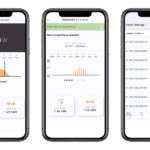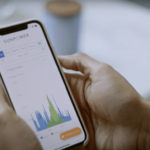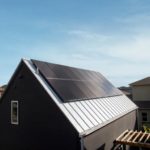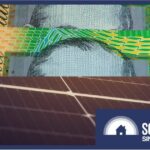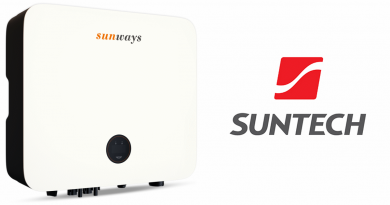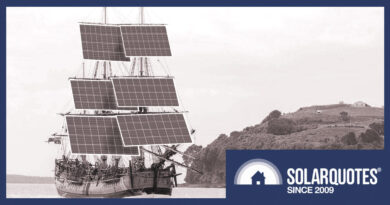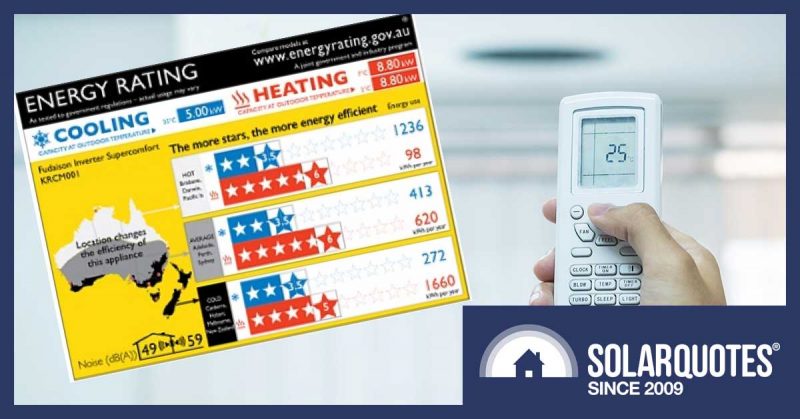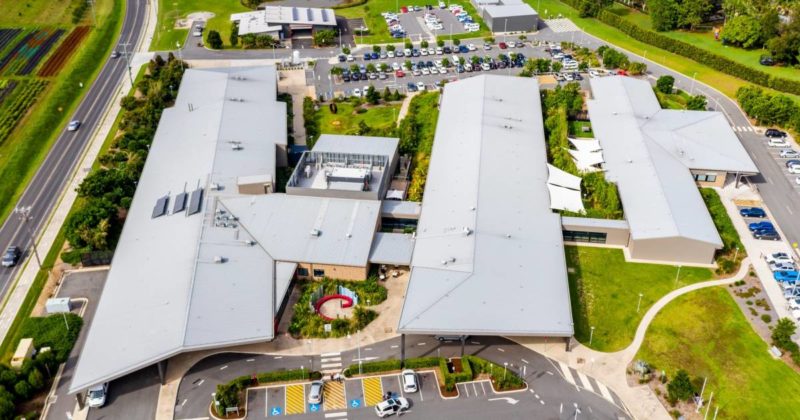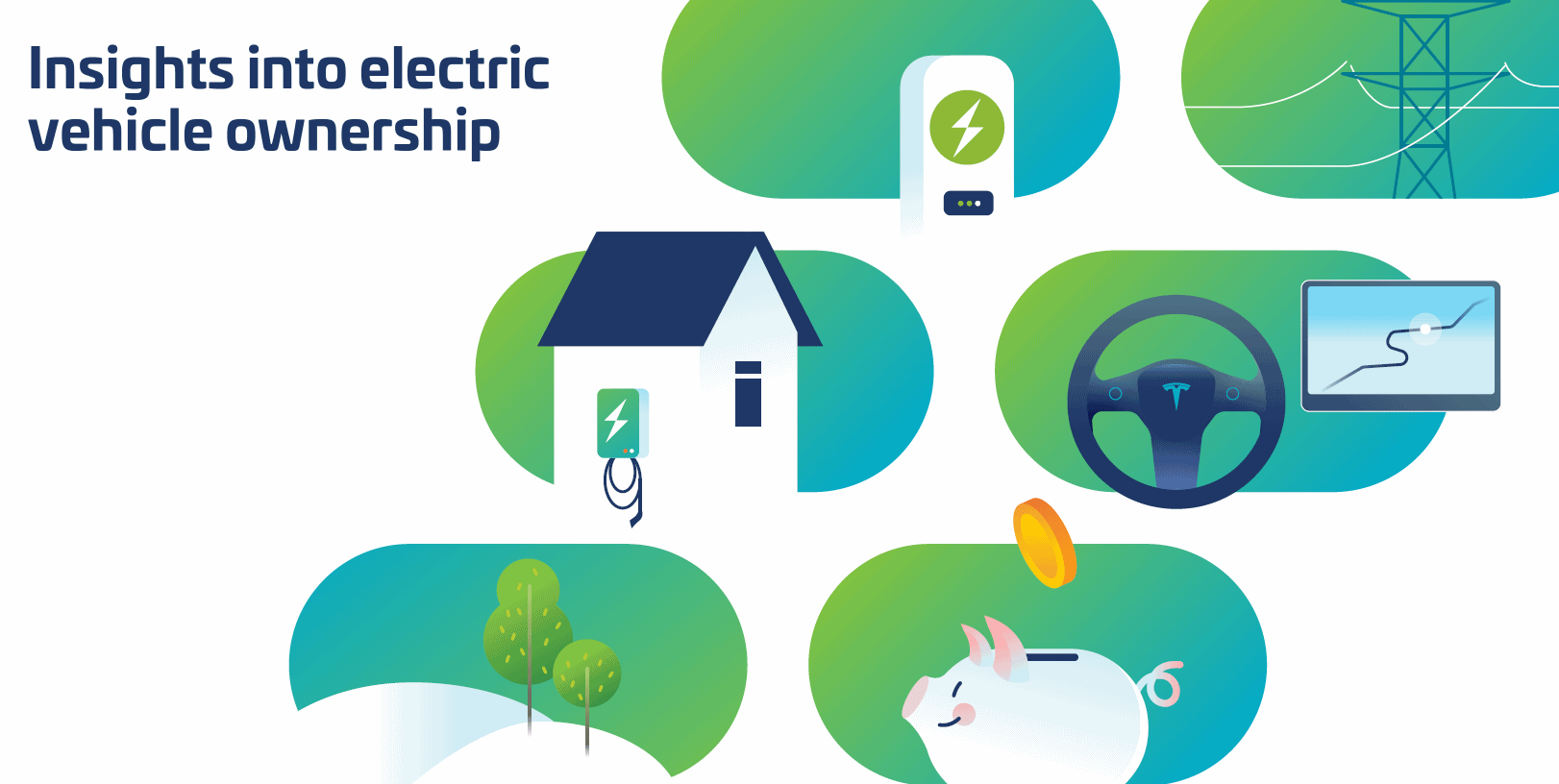Can I Use A Balcony Solar Panel System To Power My Apartment?
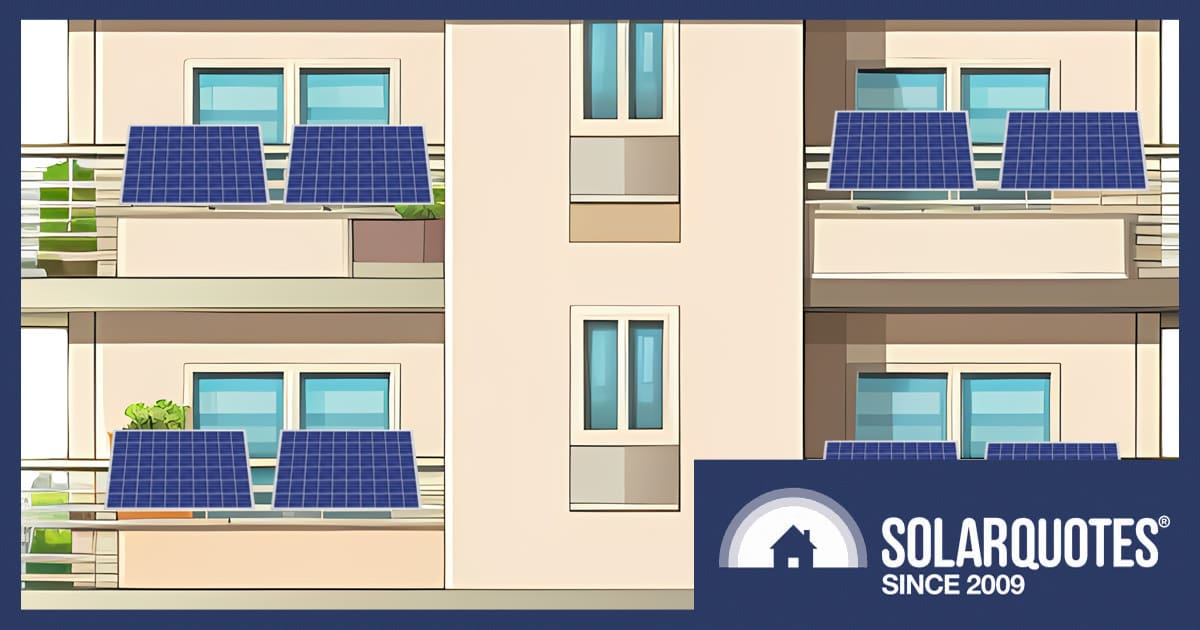
If you believe the internet, balcony or mini plug-in solar panel system sales are booming across Europe, yet there isn’t more than a whisper about them in Australia. Given the obstacles thrown at renters and apartment dwellers denying them entry to the solar revolution, should these systems be available here, too? Let’s find out.
What Is A Balcony Solar Panel System?
Firstly, to dispel any myths, a balcony solar panel system is NOT the same as a portable camping solar panel system!
- A portable camping solar panel system typically comprises lightweight, foldable panels and a compact battery designed to provide off-grid power for small electronic devices and lighting while camping or travelling.
- A balcony solar panel system, or mini plug-in solar panel system, is connected to the grid. It integrates solar panels into balconies or terraces, feeding surplus electricity directly into a power outlet to offset energy consumption within the household or building.
That’s right, plug it into your powerpoint and to hell with all these regulatory headaches! No permission needed, no paperwork, no expensive electrician required, no worries, and here in Australia… NO WAY!
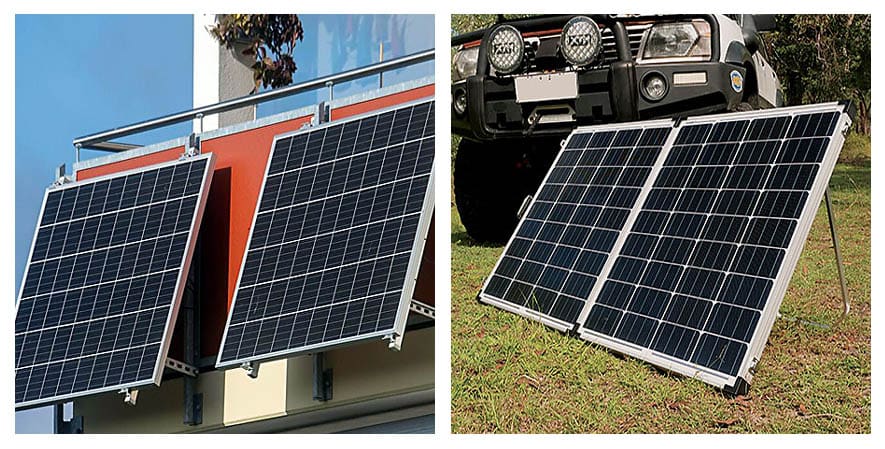
Left: Balcony solar panel system in Deutschland. Right: Camping solar panel system in Australia. They’re not the same thing!
Nanny State Or Necessary Regulation?
Hang on, back up a minute. Although these systems still need to be approved for use in Australia, they ARE regulated in other countries. So any freedom fighters complaining about Australia being the nanny state might need to get the facts straight before bemoaning their first-world problems.
The European standard is a maximum power of 800 W for balcony solar panel systems. The regulatory body in Germany, VDE (Verband der Elektrotechnik), has recently raised its limit from 600 W to 800 W along with a fleet of other proposals to encourage the use of these systems.
VDE CEO Ansgar Hinz: “The basis for the electrical safety of the systems is the VDE set of regulations. With the proposals for simplification, we want to help ensure that the use of mini power generation systems can become widespread in the future without compromising on safety.”
Systems must be registered by owners, any changes reported, and deregistered appropriately. Manufacturers must demonstrate potential risks associated with their use, include a description of safe assembly and commissioning, and guarantee their safety. Consumers may now use these solar panel systems on any meter, even allowing legacy spinning-disc type meters to run backwards “within the de minimis limit.”
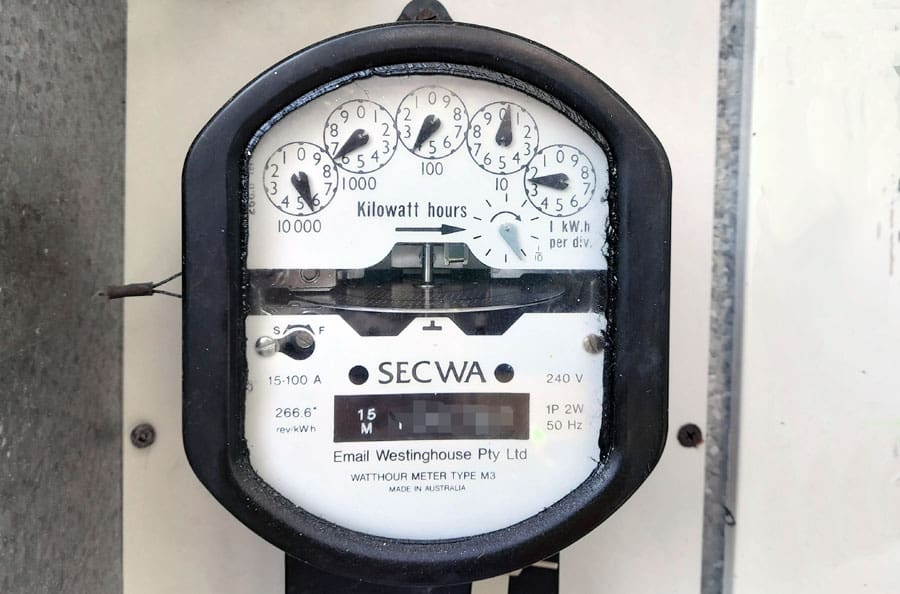
Wouldn’t it be nice to see one of these bad boys spinning backwards!
Backfeeding Safety Issues
We keep hearing about safety issues but don’t all electrical appliances have safety issues? Yes, however, even though these solar power plants are relatively small, back-feeding electricity into an electrical system creates several concerns.
Anti-islanding protection
The first one that comes to mind is something that most rooftop solar owners already know about. Anti-islanding is a built-in safety feature on grid-connected inverters that shuts down the solar output during a grid blackout. This safety precaution prevents energy from being exported to the grid and electrocuting line workers.
Overload protection
A standard rooftop solar system feeds energy into the homeowner’s switchboard on the grid supply side of the circuit breakers that protect the final sub-circuits (house load circuits.) Therefore, each protective device (circuit breaker) “sees” the full load current, whether or not it is supplied by the grid or your solar panels. It can then operate as designed and trip in an overload event.
With a balcony solar panel system, the energy is back-fed via a power point in one of those sub-circuits. This effectively increases the capacity of the circuit; however, the protective circuit breaker on the grid supply only “sees” the portion of the current flowing from the grid to meet the needs of the load. The additional capacity in the circuit means the cable is not adequately protected in an overload event.
I’m not sure what our European cousins are doing about this, if you can enlighten me, please leave a comment.
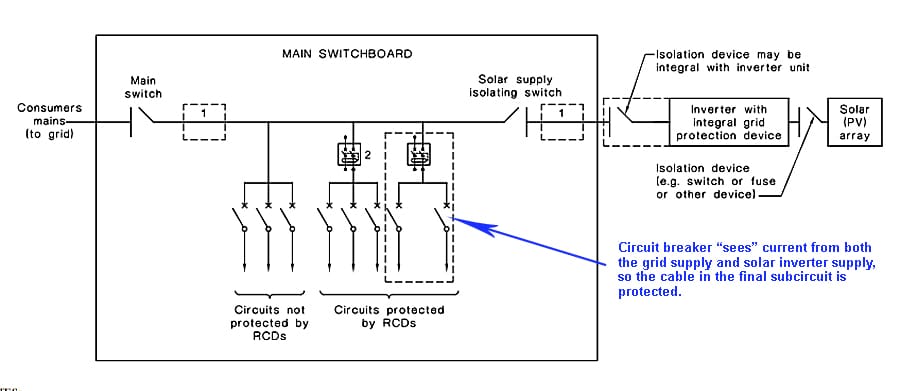
Line diagram of the circuit protection arrangement with grid supply and solar supply from a rooftop solar system.
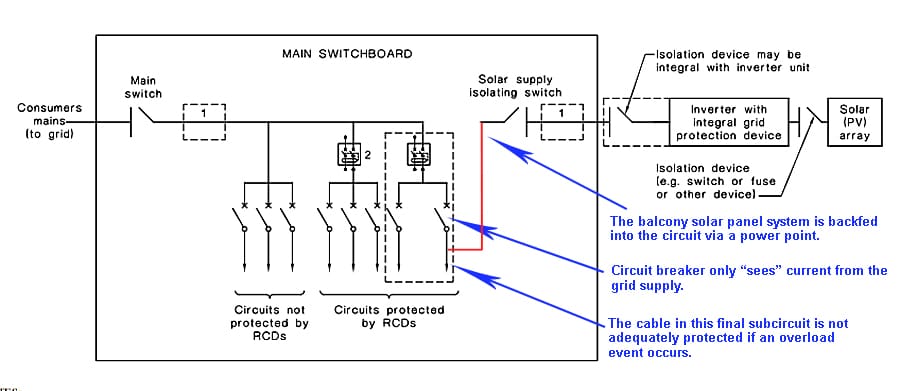
Line diagram of the circuit protection arrangement with grid supply and solar supply from a balcony solar panel system.
Correct RCD type
In most instances, Australian standards don’t require an RCD (residual current device) or RCBO (residual current breaker with overcurrent) to be installed with solar inverters unless specified by the manufacturer. However, if a balcony solar panel system gets plugged into a power circuit, an RCD or RCBO will be present. No problem, but…
The existing RCD will likely be the wrong type (type AC), which was common before an amendment of Australian Standard AS:3000 made in 2023. Inverter manufacturers typically specify at least type A, which is designed to trip on both sinusoidal AC waveforms and residual pulsating DC, which may be present if a fault condition is present.
I Fought The Law (And The Law Won)
Something readers may or may not care about is complying with the law! All electrical equipment sold in Australia, including solar inverters, must have an RCM (Registered Compliance Mark) and adhere to relevant Australian standards. Good luck with your insurance claim if the assessors see a discrepancy as they sift through the charred remains of your apartment. Sorry, freedom fighters, ignorance is no defence.
I realise that a percentage of the population loves to stick it to the man and revel at the thought of plugging in one of these systems or rigging up their own homegrown solar devices precariously connected to the grid. The solar guerrilla movement is undoubtedly alive in Australia, taking advantage of the many dirt-cheap legacy used solar inverters available. Tread carefully, friends. You might be out of your depth.
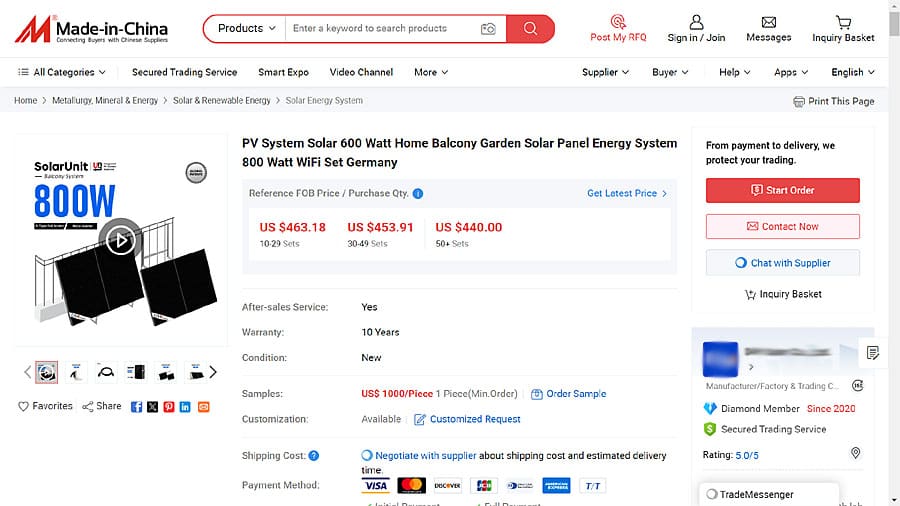
Would you take a chance on one of these? Go on, click the buy button. I dare you.
And Another Thing Or Two
And another thing: Is there a market for these balcony solar panel systems in Australia? Our most recent census puts only 10% of the population living in apartments compared to an average of 46% in Europe. The breakdown of renters, however, is similar in Australia and Europe, at about 30% of the population. Who knows, there may be potential Australian distributors quietly trying to get these things over the line.
And then there’s the elephant in the room. Hanging a few solar panels vertically off the side of a balcony is hardly the optimal position to get a return on investment for the system. Estimates quoted on the internet vary significantly, and it’s no surprise. I doubt if many apartment dwellers would be able to mount their panels in a position to take advantage of the full sun hours in a day.
Wrapping It Up
The tantalising prospect of balcony solar panel systems for apartment residents comes with a barrage of regulatory and safety hoops. While sidestepping bureaucratic red tape may seem tempting, staying within safety standards is a must. Plus, the practicality of squeezing meaningful energy yields is questionable. For now, you may be better off sticking with a portable camping solar panel system for emergencies, with the added bonus of power on camping trips!
Original Source: https://www.solarquotes.com.au/blog/balcony-solar-panel-system/




